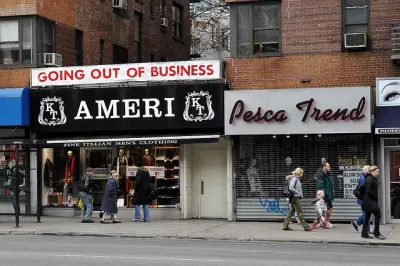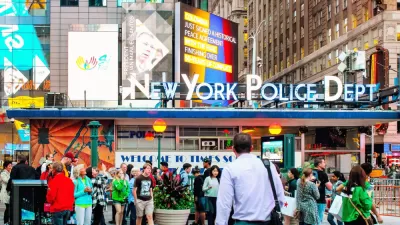A new report from the New York Department of City Planning has found that storefront vacancy may not be a one-answer citywide problem. Vacancies were found to be concentrated in certain neighborhoods, and the reasons appear to be varied.

Michelle Cohen reports:
Amid discussions of gentrification and astronomical rents, it’s impossible not to notice the alarming appearance of vacant storefronts in what seems like every neighborhood in New York City. A new report from the Department of City Planning (DCP) has attempted to get a closer look at the data behind this phenomenon to get a better understanding of how the city’s retail and storefront uses may be changing. The report, titled “Assessing Storefront Vacancy in NYC,” looks at 24 neighborhoods as case studies. The very detailed study found that, overall, storefront vacancy may not be a one-answer citywide problem. Vacancies were found to be concentrated in certain neighborhoods, and the reasons appear to be as many and varied as the neighborhoods themselves.
Cohen also lists a few of the study's key findings:
- The retail industry is changing rapidly across New York City and the country.
- Vacancy rates are volatile, vary from neighborhood to neighborhood and street to street, and cannot be explained by any single factor.
- Vacancy is concentrated only in certain neighborhoods and is influenced by local and citywide market forces and spending patterns.
The "Assessing Storefront Vacancy in NYC: 24 Neighborhood Case Studies" [pdf] report is available online.
FULL STORY: New study finds reasons for storefront vacancy are as varied as NYC neighborhoods themselves

Study: Maui’s Plan to Convert Vacation Rentals to Long-Term Housing Could Cause Nearly $1 Billion Economic Loss
The plan would reduce visitor accommodation by 25,% resulting in 1,900 jobs lost.

North Texas Transit Leaders Tout Benefits of TOD for Growing Region
At a summit focused on transit-oriented development, policymakers discussed how North Texas’ expanded light rail system can serve as a tool for economic growth.

Why Should We Subsidize Public Transportation?
Many public transit agencies face financial stress due to rising costs, declining fare revenue, and declining subsidies. Transit advocates must provide a strong business case for increasing public transit funding.

How to Make US Trains Faster
Changes to boarding platforms and a switch to electric trains could improve U.S. passenger rail service without the added cost of high-speed rail.

Columbia’s Revitalized ‘Loop’ Is a Hub for Local Entrepreneurs
A focus on small businesses is helping a commercial corridor in Columbia, Missouri thrive.

Invasive Insect Threatens Minnesota’s Ash Forests
The Emerald Ash Borer is a rapidly spreading invasive pest threatening Minnesota’s ash trees, and homeowners are encouraged to plant diverse replacement species, avoid moving ash firewood, and monitor for signs of infestation.
Urban Design for Planners 1: Software Tools
This six-course series explores essential urban design concepts using open source software and equips planners with the tools they need to participate fully in the urban design process.
Planning for Universal Design
Learn the tools for implementing Universal Design in planning regulations.
City of Santa Clarita
Ascent Environmental
Institute for Housing and Urban Development Studies (IHS)
City of Grandview
Harvard GSD Executive Education
Toledo-Lucas County Plan Commissions
Salt Lake City
NYU Wagner Graduate School of Public Service





























